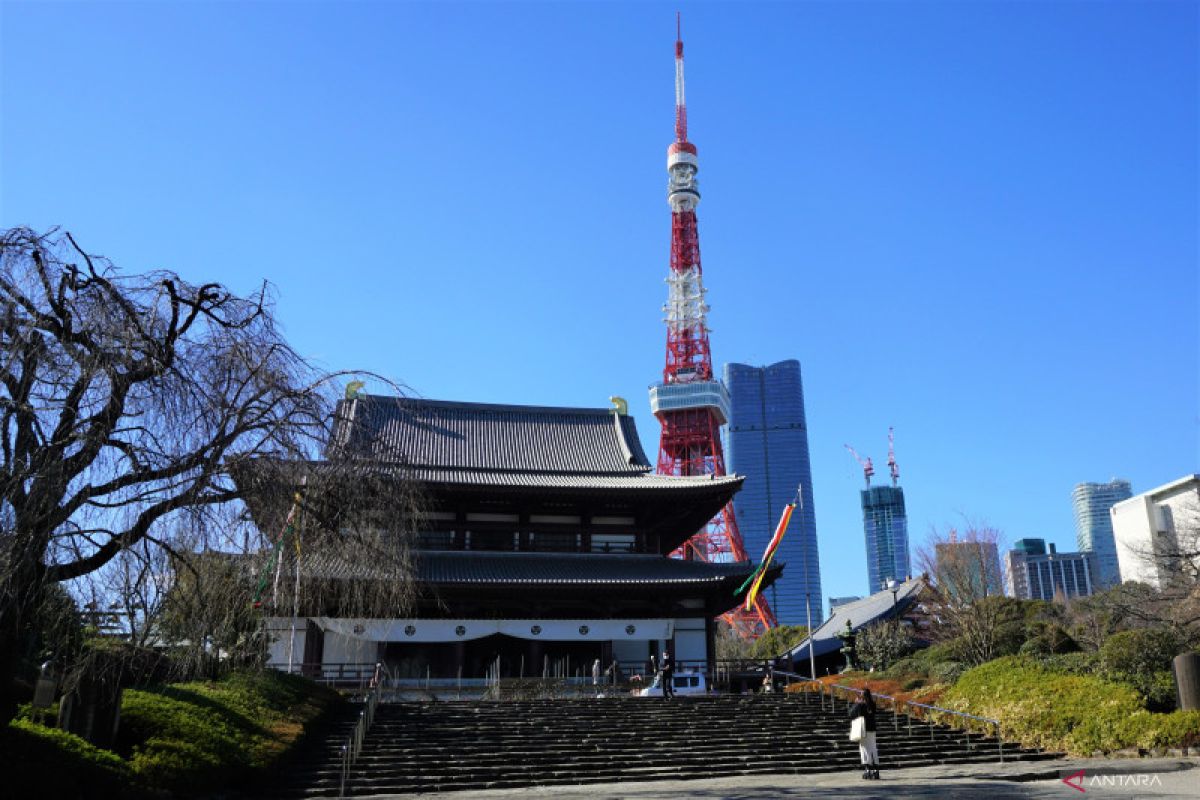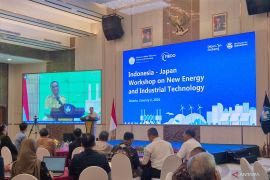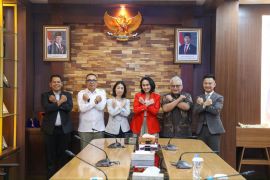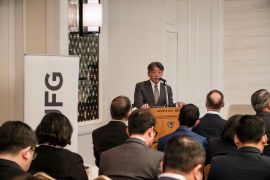Despite COVID-19 still being a threat, the country's economy is gradually improving.
The country dubbed "The Land of Cherry Blossoms" decided to lower the status of COVID-19 to the category of seasonal flu and other infectious diseases starting in May, which is expected to restore social life and the economy.
The recovery in the tourism sector has gradually gained momentum.
Although the improvement in Japan's tourism sector is still supported by local tourist visits, the reopening of flights and easing of quarantine rules for the arrival of foreign tourists is expected to increase tourist visits to Japan.
Several tourist destinations in Tokyo, including the Tokyo Tower and the Tokyo Imperial Palace, are starting to record an influx in the number of local and foreign tourists.
Tourists were also seen lined up in spiralling queues to pay for groceries and get tax-free facility at popular department stores in the Ginza area.
Tourists continue to wear masks in the outdoor area to prevent the spread of COVID-19.
The activities reflected revived enthusiasm of foreign tourists to visit Japan.
Assistance increases visits
One of the reasons for this increase was the government's efforts to assist the tourism industry in the midst of the COVID-19 pandemic.
According to the Japan Tourism Agency (JTA) data, the assistance provided includes coaching and financial support to add value to the tourism industry in several areas.
The central government provides coaching support by sending experts on revitalization, building consensus, and improvement through individual facility renovations and financing.
Moreover, the government provides project financial aid, including facility renovation subsidy to provide value-added assistance of up to 100 million yen (around US$754.4 thousand) and tourist facility renovation subsidy of up to 10 million yen (around US$75.4 thousand).
Additionally, the government gives subsidies worth 100 million yen for building conversion in tourism areas and grants of up to 20 million yen (around US$150.8 thousand) for the use of digital technology in tourism areas.
"The increase in the number of visits has gradually occurred, thanks to government assistance and also the easing of restrictions at the arrival gate, so the situation continues to improve," Deputy Director of the Tourism Industry Division of JTA, Shimizu Taiki, told ANTARA in Tokyo, Wednesday (Feb 1).
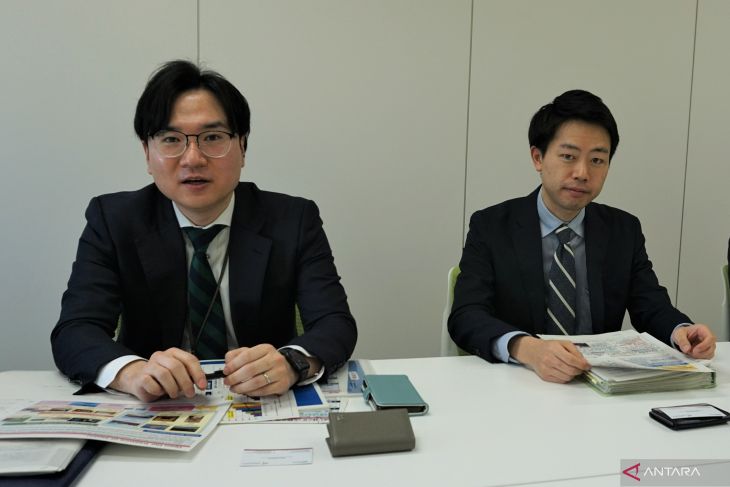
According to Taiki, the government is also assisting for campaigns to increase tourist arrivals to all regions in Japan.
In 2022, the domestic visit campaign was conducted from October 11 to December 27 by providing discounts of around 40 percent, with an upper limit of 8,000 yen (around US$60), for accommodation and transportation in Japan.
This year, the Japanese government will continue the visit campaign starting January 10, with an adjustment of the discount to 20 percent, or an upper limit of 5,000 yen (around US$37) for accommodation and transportation.
Providing assistance for the national travel campaign requires three vaccinations or a negative PCR test result.
The assistance program, starting in 2022 and continuing in 2023, has benefited the tourism industry, such as restaurant owners, outlets, hotels, and inns or ryokan, with a gradual increase in the growth of guest visits in Japan.
Taiki cited the JTA data while noting that the number of domestic and overseas hotel guests in Japan from January to May 2022 had reached a total of 155.5 million, and the figure then increased during the period from June to October 2022 to reach 205.5 million guests.
The total number of guests is better as compared to the number of hotel guest visits in 2020, the first year when COVID-19 was confirmed in Japan.
During the January-May 2020 period, the number of hotel guests was recorded at 133.4 million. Meanwhile, during the June-October 2020 period, there were only 131.1 million people.
"To attract tourists, we offer a variety of programs with quality experiences and carry out promotions to potential tourists. If they visit Japan, they will have an unforgettable experience," Taiki stated.
The tourism industry recovering
The melodic tone of the Japanese bamboo flute is audible in the terrace room of Hoshinoya Tokyo Resort.
Two female receptionists, dressed in kimonos, greeted several tourists, who had just arrived in the room that reflected an amalgamation of traditional Japanese and modern interior styles with yellow light.
The easing of travel restrictions in Japan supports the improvement in the hotel industry.
The general manager of Hoshinoya Tokyo Resort, Geunju Lee, stated that hotel occupancy had gradually improved since 2021.
"Our occupancy rate is improving positively," Lee said.
According to Lee, the occupancy rate is influenced by support from the government, such as through the Go To campaign in 2020, health support, and the most significant influence being the easing of travel restrictions at the entry gate or airport.
She explained that the biggest challenge for the hotel industry during the pandemic was the uncertainty of when COVID-19 would end as well as efforts to maintain employee welfare amid the slow economic conditions.
Lee said that the Hoshinoya Tokyo Resort had innovated to attract visitors by giving the impression of traditional yet modern interior design and Japanese culture that supports environmental sustainability.
“Our goal is to establish and introduce our business style as a hotel serving traditional Japanese ryokan to the world,” she affirmed.
The tourism industry in popular tourism destinations in Japan, such as Kyoto, is also starting to grow.
The streets in the Gionmachi Minamigawa area, Kyoto, which are popular among tourists for their culinary delights and traditional Japanese Maiko-Geiko artists, are also bustling with local and foreign tourists.

Director of the Department of Commerce, Labor, and Tourism Office of the Kyoto Prefectural Government Yamamoto Taro, revealed that a survey in 2022 recorded tourist visits to Kyoto that year to have reached as many as 3.5 million.
Although this figure was only around 10 percent of the tourist arrivals before the pandemic in 2019, reaching as many as 32 million people, this number proves that Kyoto's tourism industry is starting to revive.
"Three efforts made by the Kyoto prefectural government along with the central government to deal with the pandemic to help the tourism industry are providing financial support for tourism-related businesses; providing a sense of security, health, and comfort to visitors; and providing subsidies for tourists," Yamamoto remarked.
The local government is also campaigning for a tourism program spread across several other areas in the Kyoto Prefecture, so that tourists do not only pile up in downtown Kyoto.
The government launched the campaign for tourist destinations in the Kyoto Prefecture, apart from the center of Kyoto City, namely Kyoto Infused with Tea, Kyoto by the Sea, Kyoto Otokuni Bamboo Grove, and Kyoto in Forests.
"The four tourist destination areas can provide new locations and interesting experiences for foreign tourists," Yamamoto remarked.
Hopes are pinned high on the recovery of tourism conditions, considering the world is entering a post-pandemic period of COVID-19.
The pandemic is a valuable lesson for all countries. All stakeholders, both the government and the community, are striving to recover and become better by prioritizing health.
Related news: Increase tourism visits to Japan through digital technology: JTB Corp
Related news: Indonesia proposes security, tourism, education as ASEAN+3 focus areas
Editor: Tia Mutiasari
Copyright © ANTARA 2023
